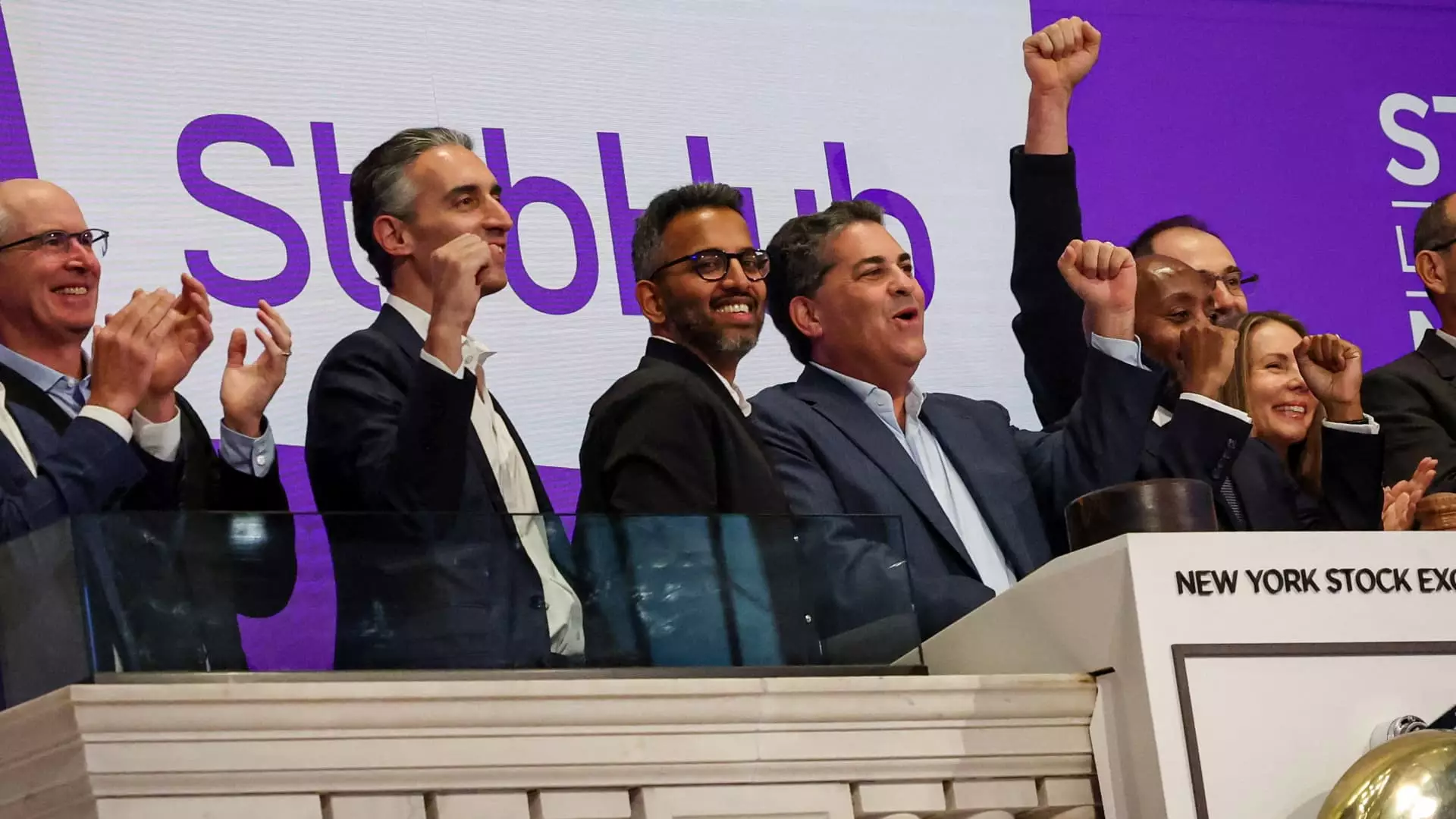The recent IPO debut of StubHub marks a pivotal moment for the ticket resale industry, encapsulating not just a mere financial transaction but a reflection of the evolving landscape of live entertainment and tech-driven marketplaces. Priced at $23.50 per share, StubHub managed to secure an $800 million infusion, yet the initial market response revealed underlying vulnerabilities. The stock’s drop below its opening price signifies more than just short-term volatility; it highlights the collective skepticism surrounding the company’s valuation amidst a recovering but unpredictable market environment.
While a decline of over 5% might seem discouraging at first glance, it is essential to interpret this move within the broader post-pandemic context. The live events industry experienced a seismic shift during COVID-19, with revenue streams dwindling as concerts and sporting events paused. Now, with the resurgence driven by blockbuster tours and major sporting events, companies like StubHub are attempting to capitalize on a renewed appetite for entertainment. Yet, the bumps in the road—such as the stock’s initial volatility—reflect investors’ cautious optimism rather than outright doubt.
Market Dynamics and Strategic Challenges
StubHub’s debut occurs amid a backdrop of wild market swings and a flock of recent tech IPOs. The company’s pricing, settled in the middle of its expectations, suggests a delicate balancing act: aiming to attract investors eager to relive the tech boom while managing skepticism born from economic uncertainty and regulatory scrutiny. The overall atmosphere is one where investors are quicker to doubt than to believe, especially in industries that hinge on fluctuating demand and complex regulatory environments.
Moreover, the industry faces intensified competition with Ticketmaster facing regulatory warnings, and emergent players like Vivid Seats and SeatGeek gaining traction. The scrutiny from authorities such as the FTC further complicates StubHub’s prospects, especially with their recent warning over transparency issues related to hidden fees. Such regulatory hurdles could impact profitability and investor confidence, making the IPO a test of trust in StubHub’s ability to navigate these challenges effectively.
Resilience Derived from Market Rebound and Strategic Positioning
Despite the mixed debut, StubHub’s historical resilience and strategic positioning paint a different picture. The company’s recent growth figures—$397.6 million in revenue for Q1 and gross merchandise sales exceeding $2 billion—underline a market eager for live experiences. The company’s pivot back to profitability and growth, after being acquired by its co-founder Eric Baker, showcases a willingness to reinvent and adapt in a competitive environment.
The surge in live event popularity, exemplified by major tours like Taylor Swift’s Eras Tour and Beyoncé’s Renaissance, demonstrates a robust customer base willing to pay premium prices for unforgettable moments. StubHub’s marketplace—selling over 40 million tickets last year—serves as a testament to its operational strength and vast network of sellers and buyers. Rather than viewing its initial stock performance as a flaw, it should be seen as a signal of the market’s cautious optimism and the inherent risks of riding the wave of industry recovery.
A Cautiously Optimistic Future for StubHub
While the IPO’s immediate aftermath exposed the market’s fragility, it also underscores the perennial adaptability of StubHub. The company’s proven ability to ride the waves of industry changes, combined with its strategic alliances and sharp focus on regulatory compliance, positions it favorably for the future. The company’s large investor base—including heavyweights like Madrone Partners and Bessemer Venture Partners—indicates strong support from experienced backers who believe in its long-term potential.
StubHub’s debut encapsulates the essence of resilience, adaptation, and the tumultuous journey of a platform deeply embedded in the live entertainment industry. Its initial stock movement is not merely a reflection of fleeting investor sentiment but a sign of a company that is navigating its growth amidst a landscape where uncertainty and opportunity coexist in a delicate balance. With live events on the rebound and a marketplace rich with opportunity, StubHub’s future hinges on its ability to maintain transparency, innovate continually, and capitalize on the renewed demand for shared experiences.

